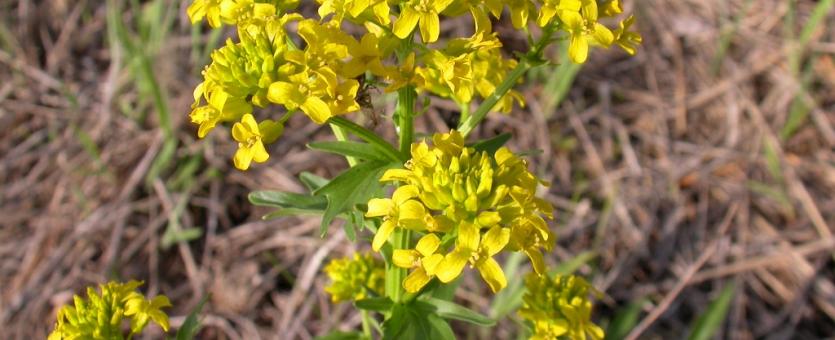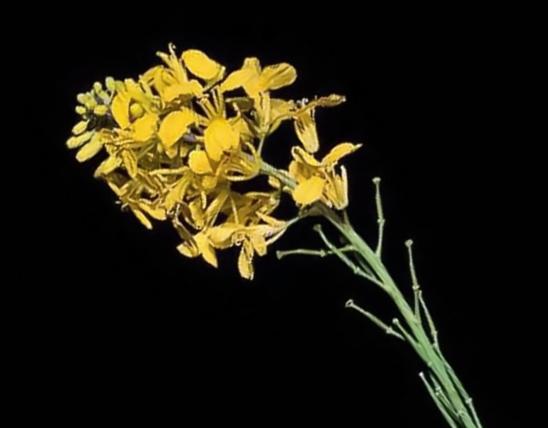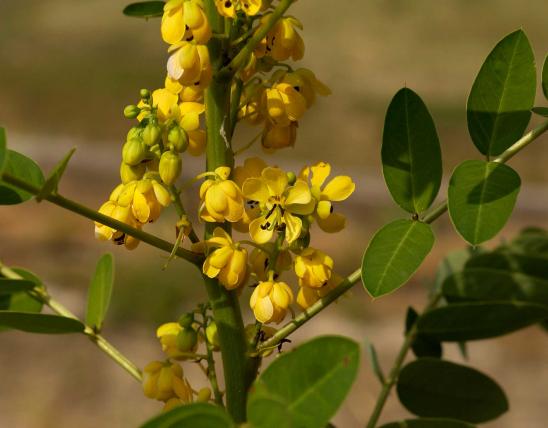
A leafy, much-branched plant to 2 feet tall. Flowers many, crowded, bright yellow, with the typical mustard-family configuration of 4 petals in a crosslike formation, about ⅜ inch across. Blooms April–June. Leaves featherlike, the terminal section oval or circular and much larger than the sections below; the lower leaves on long petioles; the stem leaves often sessile (stalkless). Fruit a long seedpod (technically, a silique); these form at the bottom of the cluster as new flowers open at the tips of the flower stalks.
Height: to 2 feet.

Statewide.
Habitat and Conservation
Occurs in cultivated and fallow fields and pastures, on stream banks, along roadsides and railroads, in waste places, and in a variety of open, disturbed areas. A native of Europe and Asia that is widely naturalized in North America, it has been here so long that there are historic records of Cherokees using it medicinally.
Human Connections
Young leaves have been eaten cooked or raw, although newer evidence indicates that chemicals in this plant can cause kidney trouble. Historically, it was used medicinally as a tea to treat a number of ailments.
Ecosystem Connections
A variety of insects, including ants, bees, and butterflies harvest nectar and pollen from the flowers. Several butterfly and moth species use plants in the mustard family as food plants, laying their eggs on the leaves, which the emerging caterpillars eat.
































